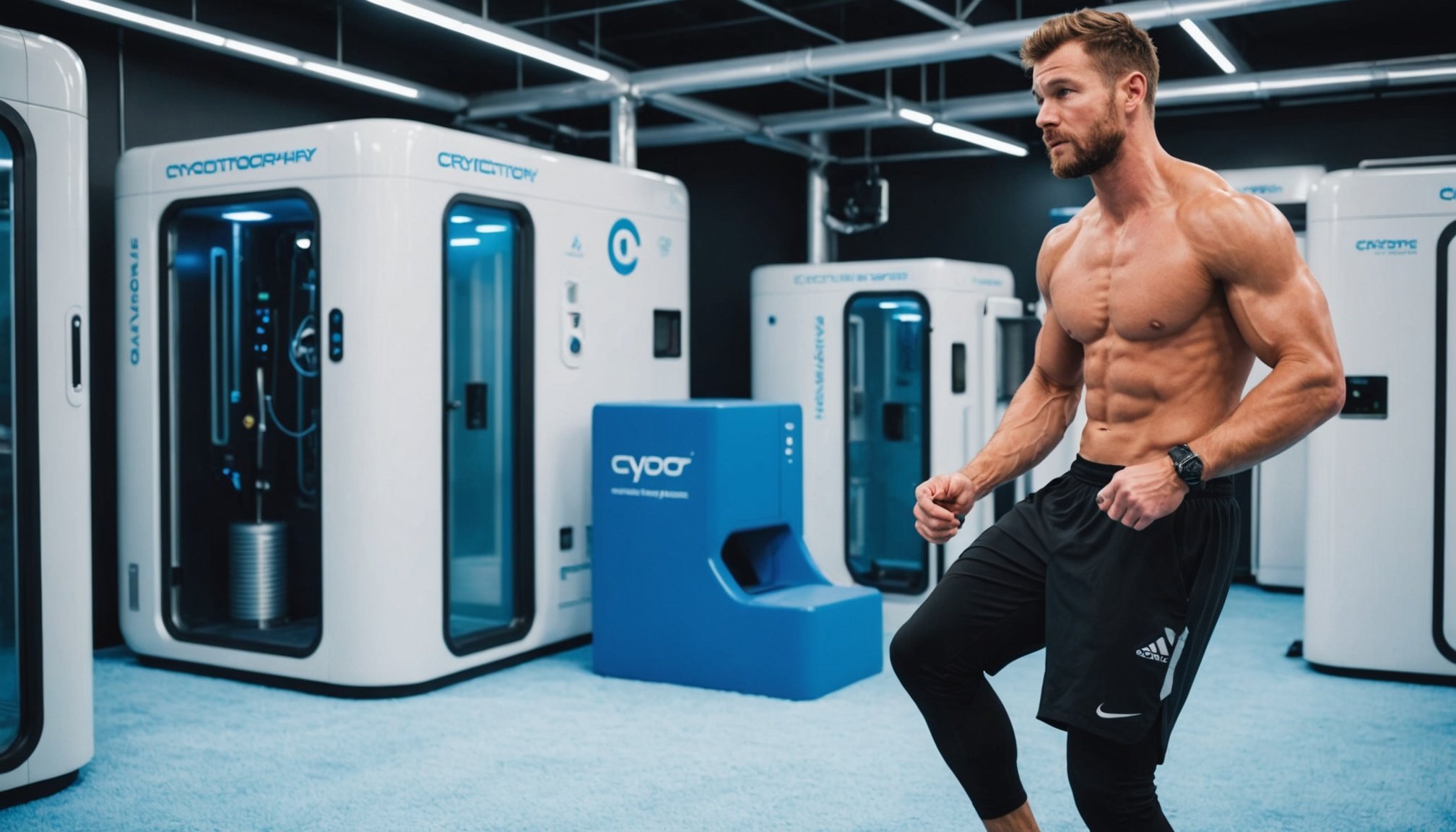Overview of Cryotherapy
Cryotherapy, a treatment involving the use of extreme cold, has become renowned for its potential benefits in various fields, including sports medicine. At its core, cryotherapy works by exposing the body or parts of it to sub-zero temperatures, which can help reduce inflammation, alleviate muscle pain, and enhance recovery.
Historically, cryotherapy dates back to ancient times, with origins tracing to the early use of ice and snow for healing purposes. Throughout the years, it has evolved significantly. Notably, its popularity surged in the 1970s when it was adopted by athletes seeking to recover quicker from injuries and post-exercise soreness.
Also to read : Find your path with an online jungian analyst today
Today, several types of cryotherapy methods are utilized, each with varying applications and benefits:
-
Whole-body cryotherapy: Performed in chambers, this modality exposes the entire body to extremely low temperatures for a brief period, typically between 2 to 4 minutes.
Also to discover : Crafting the Perfect Diabetes-Friendly Diet Plan: Your Guide to Balanced Nutrition
-
Localised cryotherapy: Focuses on specific areas, using techniques like applying ice packs or cold sprays to target specific injuries or inflammation.
-
Cryofacials: These are cosmetic treatments targeting facial skin with cold temperatures to promote a youthful appearance by improving blood circulation and collagen production.
Cryotherapy’s increasing appeal, notably in sports and wellness industries, underscores its effectiveness and versatility as a therapeutic tool today.
Mechanisms of Muscle Recovery
Understanding muscle recovery mechanisms is essential for optimizing physical performance. One method, cold therapy, notably affects the repair and regeneration of muscle tissue. When muscles are subjected to intense exercise, micro-tears occur in the fibers. Cryotherapy, or cold therapy, is applied to these areas, causing blood vessels to constrict. This vasoconstriction helps reduce metabolic activity, thereby diminishing the risk of inflammation. Reduced inflammation consequently leads to decreased pain and faster recovery times.
Furthermore, the physiological effects of cold therapy extend beyond just inflammation control. By lowering tissue temperature, cryotherapy can temporarily numb nerve endings, providing immediate pain relief and allowing athletes to resume training with minimal downtime. The effectiveness of this method, when compared to other muscle recovery strategies, often includes a quicker return to baseline strength and function.
Compared to techniques like heat therapy or compression, which have different physiological impacts, cryotherapy’s ability to swiftly manage inflammation makes it a favored choice among athletes and physiotherapists. It’s crucial, however, to understand its application depends on the injury or fatigue level and should be implemented as part of a balanced recovery protocol. When used appropriately, cold therapy complements other approaches, enhancing overall rehabilitation and performance.
Benefits of Cryotherapy for Athletes
Cryotherapy, an advanced recovery technique, offers numerous benefits that enhance athletic performance and aid in reducing recovery time. Whether you are a professional athlete or a weekend warrior, incorporating cryotherapy into your routine can significantly boost your post-exercise recovery.
One of the primary benefits is the enhanced recovery time. Cryotherapy helps to decrease inflammation and accelerate the repair of muscle tissues, which can alleviate delayed onset muscle soreness (DOMS). This reduction in soreness allows athletes to return to training with less discomfort and at a quicker pace.
Additionally, the psychological benefits of cryotherapy should not be underestimated. Many athletes report improved mood and psychological resilience, likely due to the endorphin release during the therapy sessions. This improvement in mental health can directly contribute to superior athletic performance.
The application of cryotherapy is versatile, suiting various athletes from runners to weightlifters. By minimizing recovery time, athletes can maintain a more consistent and effective training regime, leading to better results. Embracing these benefits, athletes can access a holistic tool that supports both the body and mind, reinforcing their quest for peak performance.
Scientific Studies and Evidence
Cryotherapy, often heralded in the sports world, has a foundation in research that underscores its potential benefits. A multitude of studies has observed how cold exposure can help reduce inflammation and alleviate pain, making it particularly attractive for athletes seeking swift recovery. Notably, peer-reviewed studies have highlighted improved muscle recovery and increased joint flexibility following cryotherapy sessions.
Similarly, the value of data analysis cannot be underestimated. Rigorous analysis has been applied to comprehension of cryotherapy’s effectiveness in optimizing athletic performance. This analysis often reveals not only the physical but also the psychological benefits, such as increased well-being due to endorphin release.
Moreover, testimonials from athletes lend personal insight into cryotherapy’s applications. Many athletes report quicker recovery times and decreased soreness. However, such anecdotal evidence, while supportive, lacks the robustness of scientific studies and should be seen as complementary evidence.
Limitations persist, requiring further research. Some studies indicate variability in outcomes, often tied to the duration and method of cold exposure. Ongoing exploration into cryotherapy can address these inconsistencies, thereby refining our understanding and application of this recovery tool. By combining both qualitative and quantitative evidence, the potential for cryotherapy becomes more pronounced within sports science.
Practical Applications of Cryotherapy in Training
Integrating cryotherapy into an athlete’s training regimen requires careful planning and attention to detail. For optimal implementation, guidelines suggest that cryotherapy sessions should be strategically placed around the athlete’s schedule. It is often beneficial to schedule these sessions post-exercise to aid in muscle recovery and alleviate soreness.
Determining the optimal timing and frequency of cryotherapy sessions is crucial. Typically, athletes might begin with sessions 2-3 times per week, effectively balancing between recovery needs and potential scheduling constraints. However, this frequency can be adjusted depending on the athlete’s body response and training intensity. A gradual increase based on observed benefits and medical advice ensures maximized efficacy and safe implementation.
While cryotherapy offers several advantages, safety and contraindications should not be ignored. Not every athlete is a suitable candidate for cryotherapy. It is advised that those with cardiovascular issues, skin conditions, or certain respiratory diseases seek medical clearance before participation. Ensuring that sessions are conducted under professional supervision can mitigate risks especially in first-time users or individuals sensitive to cold temperatures. Implementing these guidelines ensures that cryotherapy seamlessly complements training goals while prioritizing athlete safety and wellness.
Expert Opinions and Testimonials
Understanding the power of cryotherapy begins with insights from sports medicine experts. These professionals often endorse cryotherapy as a beneficial therapy for athletes. Their expert advice is rooted in extensive research and clinical experience. They explain how cold exposure can reduce inflammation, speed up recovery, and improve overall athletic performance.
To support their theories, many athletes share their personal experiences with cryotherapy. These athlete experiences provide a glimpse into the practical benefits of the treatment. For instance, Olympic-level competitors frequently praise its rejuvenating effects, describing it as a game-changer for muscle recovery and pain relief. Such endorsements from high-profile athletes bolster the popularity of cryotherapy in the sports world.
Furthermore, experts offer valuable recommendations for achieving optimal results with cryotherapy. It’s advised to follow specific protocols to maximize benefits, such as limiting sessions to a few minutes and maintaining a consistent routine. The combination of expert advice and athlete testimonials creates a compelling case for incorporating cryotherapy into training regimens.
When considering cryotherapy, it’s beneficial to weigh both expert opinions and firsthand experiences. This dual approach can lead to a more informed decision, ensuring that athletes harness the full potential of this innovative therapy.
Visual Aids and Infographics
Visual aids and infographics significantly enhance the understanding of cryotherapy processes. By simplifying complex data and concepts, they make educational content more engaging and accessible. For instance, visual aids can depict how cryotherapy influences the body at a cellular level, illustrating the process’s intricacies in a straightforward manner.
Infographics help convey the recovery benefits of cryotherapy. They can effectively display time-based recovery graphs, showing how treatment accelerates muscle healing compared to regular recovery methods. Including detailed visual representations of before-and-after treatment scenarios can help clarify the benefits users might not easily understand through textual descriptions alone.
Moreover, data visualization tools can portray findings from studies, enhancing the information’s credibility. For example, pie charts representing success rates or bar graphs showing the duration of recovery can solidify the arguments around the effectiveness of cryotherapy. Presenting this data across clear, concise infographics ensures the information is both engaging and educational.
Such visual aids not only capture the viewer’s attention but also ensure a deeper understanding of cryotherapy’s impact by presenting educational content in a digestible format. Incorporating well-crafted visual tools is essential in communicating complex health concepts effectively.











